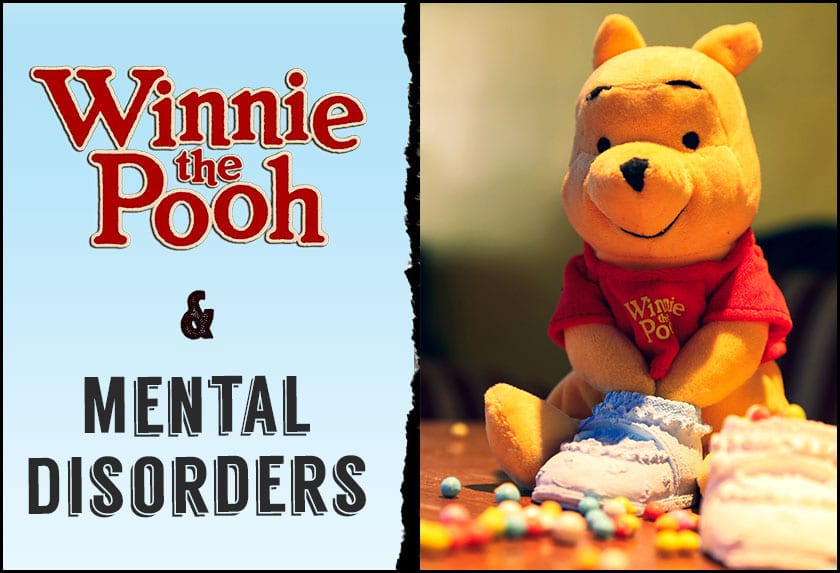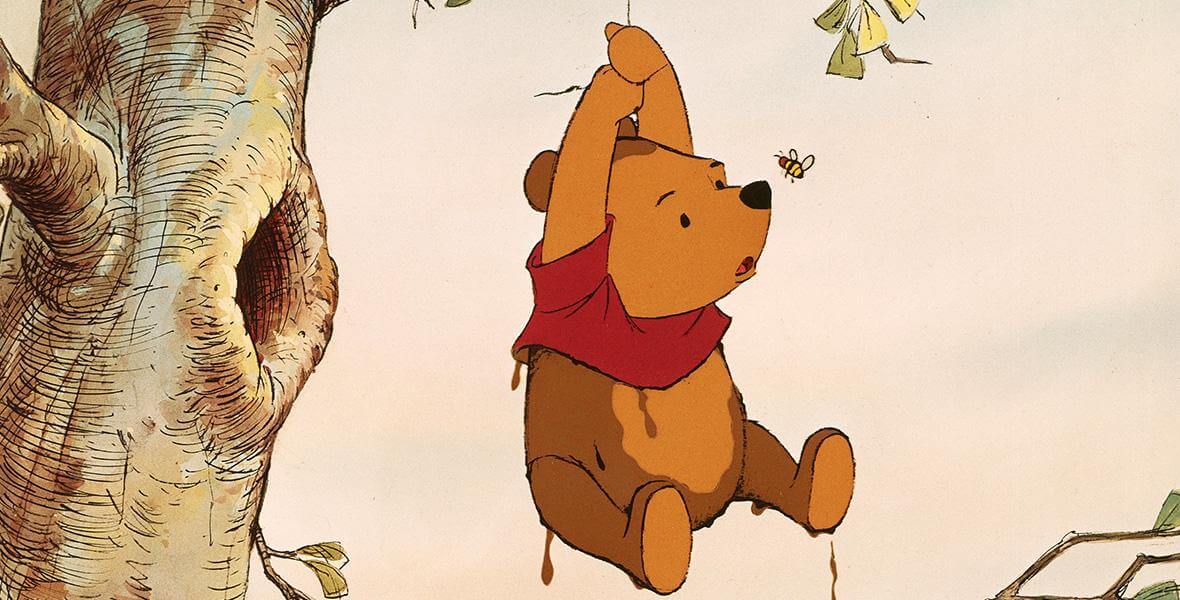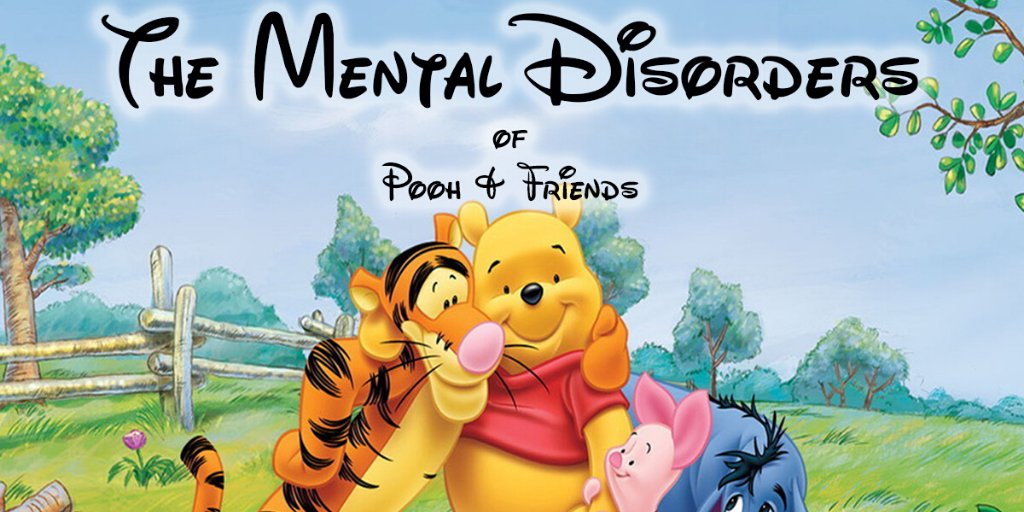Unveiling: Winnie The Pooh's Mental Health Struggles & Story
Is the Hundred Acre Wood a place of innocent whimsy, or a subtle depiction of complex psychological states? The enduring charm of A.A. Milne's Winnie-the-Pooh might, in fact, lie in its surprisingly accurate and poignant portrayal of various mental health conditions, offering a gentle, accessible framework for understanding the human experience.
For generations, children and adults alike have delighted in the adventures of Pooh, Piglet, Eeyore, Tigger, and the rest of the beloved characters. However, beyond the surface level of honey pots and playful games, a deeper examination reveals potential allegorical representations of several mental illnesses. The seemingly simple narratives of friendship and problem-solving might, in reality, be a masterclass in how different individuals navigate and cope with their internal struggles. This analysis, while speculative and not definitively intended by Milne, allows for a fascinating exploration of human psychology through the lens of these cherished characters. It's a testament to the power of storytelling and the enduring appeal of these characters that such interpretations remain relevant and thought-provoking.
| Character | Possible Mental Health Condition | Observations |
|---|---|---|
| Winnie the Pooh | Attention-Deficit/Hyperactivity Disorder (ADHD) & possible Obsessive Compulsive Disorder (OCD) | Poohs constant hunger and preoccupation with honey can be seen as a manifestation of a reward-seeking behavior. His impulsivity and difficulty concentrating are common traits of ADHD. His repetitive actions, such as the frequent need to visit his honey pot and the ritualistic nature of his actions, could also be indicative of OCD tendencies. |
| Piglet | Generalized Anxiety Disorder (GAD) | Piglet's pervasive worry, timidity, and tendency to fear the unknown are consistent with the symptoms of GAD. He is frequently apprehensive and requires reassurance from others. He is often portrayed as easily frightened, and his anxiety colors his interactions with the world. |
| Eeyore | Depression and Dysthymia | Eeyore's persistent low mood, pessimism, and lack of motivation are classic signs of depression. His flat affect, social withdrawal, and feelings of hopelessness are consistent with dysthymia, a milder but chronic form of depression. His proneness to seeing the negative side of any situation is also quite indicative of the state. |
| Tigger | Attention-Deficit/Hyperactivity Disorder (ADHD) & Mania | Tigger's boundless energy, impulsivity, and hyperactivity are readily identifiable with ADHD. His excessive enthusiasm and inability to focus for an extended period could be associated with impulsivity. At other points his inflated self-esteem and risk-taking behaviour could indicate a manic state. |
| Rabbit | Obsessive-Compulsive Personality Disorder (OCPD) | Rabbit's rigid adherence to rules, need for order, and controlling behavior are suggestive of OCPD. He is often overly concerned with organization and details, prioritizing routines and rituals over flexibility and spontaneity. His perfectionism is also a clear indicator. |
| Owl | Pseudointellectualism | Owl displays the characteristics of one who appears intelligent but is not based on real knowledge, but rather self-importance. Owl is often seen as wise but sometimes offers advice that is ultimately useless or incorrect. This can be due to the inability to separate facts from opinions, and is a trait of a pseudointellectual |
Winnie the Pooh, the bear of little brain, embodies several characteristics potentially indicative of Attention-Deficit/Hyperactivity Disorder (ADHD). His distractibility is a constant theme; he's easily sidetracked from one thought or activity to another, often forgetting his initial purpose. His impulsivity is evident in his tendency to act without thinking, driven by immediate desires, most notably, his craving for honey. This impulsivity can lead him into various predicaments, demonstrating a lack of foresight and a difficulty in regulating his behavior. Pooh's hyperactivity, though not always overt, manifests in a restlessness and a difficulty in remaining still or focused for extended periods. He might also exhibit some characteristics of Obsessive Compulsive Disorder (OCD), with his fixation on honey and repetitive behaviors. He appears to obsess over the source of honey and displays ritualistic behaviours to get it. These characteristics, though presented with innocence, offer a compelling perspective on the internal struggles of individuals with ADHD and OCD.
Piglet, the diminutive pig, is a clear depiction of someone struggling with anxiety. His constant worrying and feelings of nervousness are a recurring element of the narrative. His social anxiety is evident in his shyness and need for reassurance from his friends. Piglet's tendency to catastrophize and his fear of the unknown showcase the way his anxiety affects his worldview. He often overthinks situations, imagining the worst-case scenarios and exhibiting traits of anxiety disorder. His behaviour offers a touching glimpse into the day-to-day experiences of those suffering from chronic anxiety.
Eeyore, the perpetually melancholic donkey, personifies depression and possibly dysthymia. His persistent low mood, pessimism, and lack of motivation are telltale signs of depression. His flat affect, his pessimistic outlook, his tendency to withdraw from social interactions, and his lack of enthusiasm for life's activities all paint a portrait of someone grappling with internal sadness. His statements such as "Thanks for noticing me," and his generally negative outlook are indicators of a persons struggle with depression. His interactions offer a powerful reminder of the complexities of mood disorders and the importance of empathy.
Tigger, the exuberant tiger, offers a study in hyperactivity, impulsivity, and an almost manic level of energy. His boundless energy and inability to stay still make him the embodiment of hyperactivity. Tigger's impulsiveness is clearly visible in his impetuous actions and his eagerness to jump into new activities without considering the consequences. His unflagging optimism, excessive enthusiasm, and at times erratic behavior could be seen as indicative of a manic state. Tigger demonstrates a clear, if exaggerated, portrayal of someone struggling with a condition such as ADHD.
Rabbit, the organized and fastidious character, displays traits consistent with Obsessive-Compulsive Personality Disorder (OCPD). His strict adherence to rules, his focus on order and control, and his need for planning and detail are often seen. Rabbit is highly organized and detail-oriented, and he is a stickler for routine. Rabbit's perfectionism and his intolerance for disorder can be perceived through his behaviour with his friends in the Hundred Acre Wood.
The interpretations of these characters are not intended to diagnose or pathologize the characters. It's crucial to remember that these are fictional creations and that A.A. Milne's intention was not to create case studies of mental illness. Rather, this analysis acknowledges the potential of literature, particularly childrens literature, to provide a platform for discussing complex human experiences. The brilliance of Milne's writing lies in its ability to use simple stories to explore the complexities of human nature. The characters of the Hundred Acre Wood offer a relatable, even if simplified, exploration of the wide range of human experiences, including the challenges of mental health.
The enduring appeal of Winnie-the-Pooh stems from its capacity to resonate with readers of all ages. Children find comfort in the simple stories of friendship and adventure, while adults can derive a deeper level of understanding. Milne's subtle exploration of complex human emotions and behaviors is a testament to the power of narrative to illuminate the nuances of the human condition. The characters, with their distinct personalities, create a narrative where the readers can find meaning in them.
The application of diagnostic criteria, such as those found in the DSM-5 (Diagnostic and Statistical Manual of Mental Disorders), should not be taken literally, nor should it be used to label these fictional characters. Instead, the exercise of analyzing the characters of the Hundred Acre Wood can be a starting point for understanding the prevalence of mental health conditions and a reminder of the importance of empathy and support. Many of the disorders illustrated by the characters of Winnie-the-Pooh are often misunderstood and stigmatized in society. This examination aims to encourage a more empathetic and insightful approach to mental health.
The ongoing popularity of Winnie-the-Pooh underscores the timeless quality of Milne's storytelling and the profound connection the audience has with the characters. The stories are not just entertainment; they provide a starting point for understanding the universal human experience. The Hundred Acre Wood remains a place where we can explore the depths of human emotion with sensitivity, warmth, and a healthy dose of whimsy. It's a world where, despite their internal struggles, the characters find solace in their friendships and the simple joys of life.
The discussion of mental health in the context of Winnie-the-Pooh also serves as a reminder of the importance of seeking help and support when facing mental health challenges. If you or someone you know is struggling, it is essential to consult with qualified professionals. Resources such as the National Alliance on Mental Illness (NAMI) and the Mental Health America (MHA) provide valuable information and support services.
The narrative of Winnie-the-Pooh teaches the audience how the characters are able to support each other, even with their specific disorders. The characters are able to come together and help each other with their struggles. This show's importance of community and togetherness.
The Hundred Acre Wood, as portrayed by Milne, shows the realities of human life. The characters of Winnie-the-Pooh will forever be remembered for their struggles, their triumphs, and their ability to build community and help one another through their personal hurdles. While the author never intended to explicitly portray mental illness, the narratives of the characters provide an accessible framework for a more inclusive understanding of the issues of mental health. The timelessness and popularity of Winnie-the-Pooh are testament to the enduring human desire for connection, understanding, and acceptance, regardless of the challenges we face.
The world of Winnie-the-Pooh stands as a testament to the power of empathy and understanding. It is a reminder that even in the simplest of stories, profound truths about the human experience can be found. By exploring the characters, we can gain a greater understanding of ourselves and the people around us. The Hundred Acre Wood is a place of adventure and friendship, but it is also a place where we can learn to accept and support each other in the face of adversity. It reminds us that it is okay to be different, to struggle, and to seek support when needed. It is a place where the power of friendship and community can help people cope with their own struggles. This is the lasting legacy of Winnie-the-Pooh.


